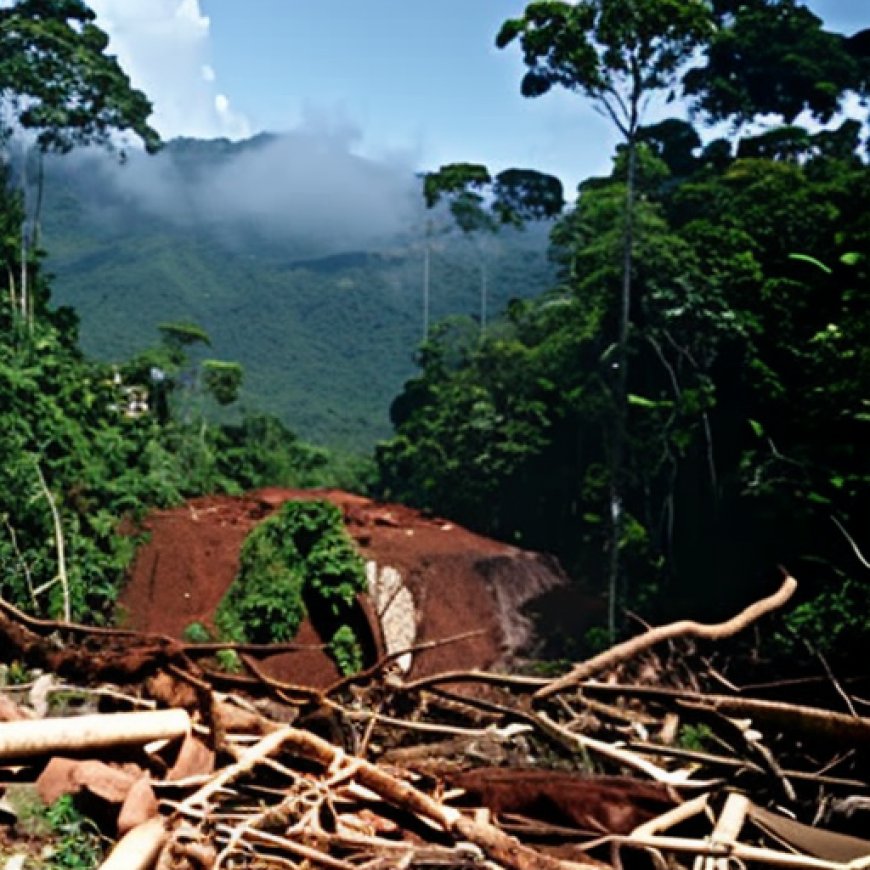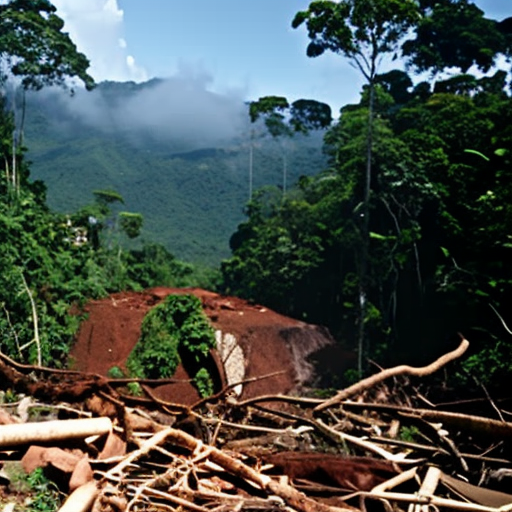‘A ray of hope’: Forest destruction in Brazil and Colombia has fallen ‘dramatically’
'A ray of hope': Forest destruction in Brazil and Colombia has fallen 'dramatically' Sky News


Forest Destruction Declines in Brazil and Colombia, Offering Hope for Global Deforestation
According to new research by Global Forest Watch (GFW), forest destruction in Brazil and Colombia has fallen dramatically under new political leaders. The steep declines offer a ray of hope for the rest of the world, showing that progress is possible, given the right political will. In 2023, forest loss fell by a remarkable 36% in Brazil and 49% in Colombia. This coincided with the new presidencies and policies of Brazil’s Luiz Inácio Lula da Silva and Colombia’s Gustavo Petro.
What does this mean for the global deforestation target?
The persistent, permanent destruction of tropical forests leaves the world definitely not on track to halt and reverse deforestation in just six years’ time, said Mikaela Weisse from the World Resources Institute. The 2030 target was struck with much fanfare at COP26, the climate summit in Glasgow in 2021. Since then, forest loss rates have hardly changed. Forest loss can include deliberate deforestation, as well as manmade accidental fires and wildfires. The main cause globally is agriculture, and 96% of deforestation happens in the tropics. Tropical forests create ecosystems vital for neighboring food production, underpin health, and help fight climate change by absorbing carbon dioxide (CO2).
Amazon ‘tipping point’ warning
GFW’s report cites Lula’s new leadership for revoking anti-environmental measures, recognizing new indigenous territories, and bolstering law enforcement efforts. But while the destruction of Brazil’s Amazon forest dropped 39%, rates increased in its lesser protected Cerrado region. Meanwhile, the Amazon is experiencing its worst drought on record, raising fears it could eventually reach a “tipping point,” beyond which it can no longer support a rainforest and would dry out, in turn further driving climate change. Stopping deforestation alone isn’t enough to avert a tipping point as long as countries continue to burn fossil fuels that drive climate change.
How deforestation in Colombia is linked to the peace process
The loss of primary forest in Colombia soared in 2016, coinciding with the country’s peace agreement with the Revolutionary Armed Forces of Colombia (FARC). Large tracts of remote forests previously strictly controlled by the FARC became accessible and ended up being cleared by other armed groups and land speculators. In August 2022, Colombia inaugurated its new president, Gustavo Petro Urrego, who has prioritized the environment and set forest conservation as an explicit goal of the discussions. However, forest loss in Bolivia increased by 27% last year, driven by fires and agriculture, particularly soy.
Conclusion
The key underlying issue is that it is currently more profitable to clear forests than to keep them standing. However, various solutions exist, including financial incentives, strong government policy, anti-deforestation regulation in countries creating the demand, and bolstering local economies in non-timber products.
SDGs, Targets, and Indicators
1. Which SDGs are addressed or connected to the issues highlighted in the article?
- SDG 15: Life on Land
- SDG 13: Climate Action
2. What specific targets under those SDGs can be identified based on the article’s content?
- SDG 15.2: By 2020, promote the implementation of sustainable management of all types of forests, halt deforestation, restore degraded forests, and substantially increase afforestation and reforestation globally.
- SDG 13.2: Integrate climate change measures into national policies, strategies, and planning.
3. Are there any indicators mentioned or implied in the article that can be used to measure progress towards the identified targets?
- Forest loss rates in Brazil and Colombia (mentioned in the article) can be used as an indicator to measure progress towards SDG 15.2.
- The presence or implementation of anti-deforestation regulations and strong government policies (mentioned in the article) can be used as indicators to measure progress towards SDG 15.2.
- The integration of climate change measures into national policies and strategies (mentioned in the article) can be used as an indicator to measure progress towards SDG 13.2.
Table: SDGs, Targets, and Indicators
| SDGs | Targets | Indicators |
|---|---|---|
| SDG 15: Life on Land | Target 15.2: By 2020, promote the implementation of sustainable management of all types of forests, halt deforestation, restore degraded forests, and substantially increase afforestation and reforestation globally. | – Forest loss rates in Brazil and Colombia – Presence or implementation of anti-deforestation regulations and strong government policies |
| SDG 13: Climate Action | Target 13.2: Integrate climate change measures into national policies, strategies, and planning. | – Integration of climate change measures into national policies and strategies |
Behold! This splendid article springs forth from the wellspring of knowledge, shaped by a wondrous proprietary AI technology that delved into a vast ocean of data, illuminating the path towards the Sustainable Development Goals. Remember that all rights are reserved by SDG Investors LLC, empowering us to champion progress together.
Source: news.sky.com

Join us, as fellow seekers of change, on a transformative journey at https://sdgtalks.ai/welcome, where you can become a member and actively contribute to shaping a brighter future.







